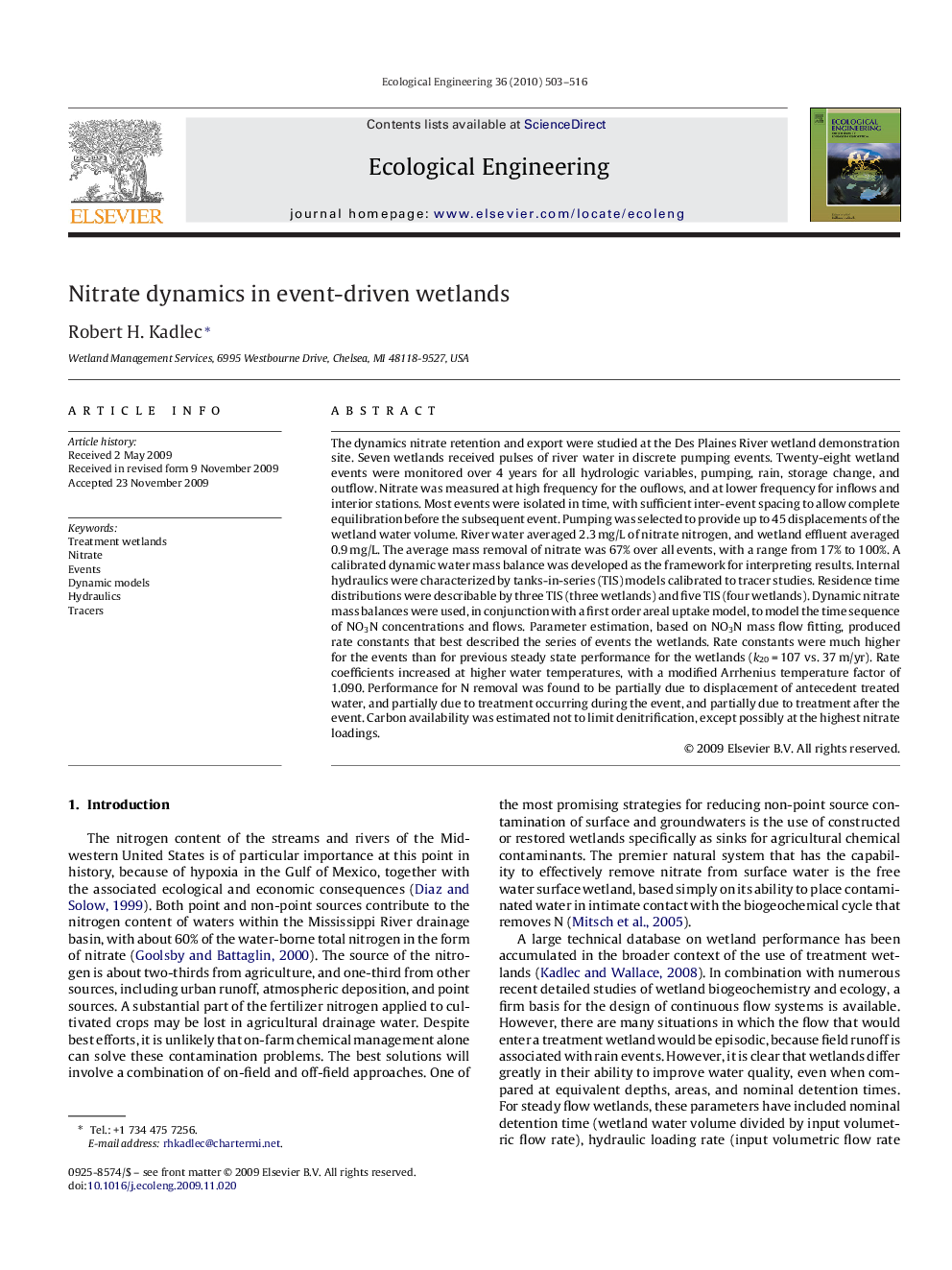| Article ID | Journal | Published Year | Pages | File Type |
|---|---|---|---|---|
| 4390758 | Ecological Engineering | 2010 | 14 Pages |
The dynamics nitrate retention and export were studied at the Des Plaines River wetland demonstration site. Seven wetlands received pulses of river water in discrete pumping events. Twenty-eight wetland events were monitored over 4 years for all hydrologic variables, pumping, rain, storage change, and outflow. Nitrate was measured at high frequency for the ouflows, and at lower frequency for inflows and interior stations. Most events were isolated in time, with sufficient inter-event spacing to allow complete equilibration before the subsequent event. Pumping was selected to provide up to 45 displacements of the wetland water volume. River water averaged 2.3 mg/L of nitrate nitrogen, and wetland effluent averaged 0.9 mg/L. The average mass removal of nitrate was 67% over all events, with a range from 17% to 100%. A calibrated dynamic water mass balance was developed as the framework for interpreting results. Internal hydraulics were characterized by tanks-in-series (TIS) models calibrated to tracer studies. Residence time distributions were describable by three TIS (three wetlands) and five TIS (four wetlands). Dynamic nitrate mass balances were used, in conjunction with a first order areal uptake model, to model the time sequence of NO3N concentrations and flows. Parameter estimation, based on NO3N mass flow fitting, produced rate constants that best described the series of events the wetlands. Rate constants were much higher for the events than for previous steady state performance for the wetlands (k20 = 107 vs. 37 m/yr). Rate coefficients increased at higher water temperatures, with a modified Arrhenius temperature factor of 1.090. Performance for N removal was found to be partially due to displacement of antecedent treated water, and partially due to treatment occurring during the event, and partially due to treatment after the event. Carbon availability was estimated not to limit denitrification, except possibly at the highest nitrate loadings.
